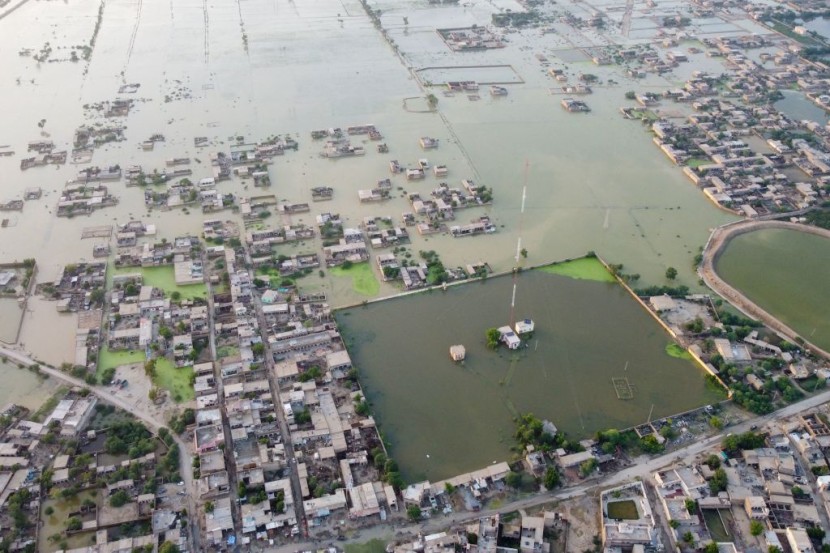
Pakistanis are now fighting against waterborne illnesses amid deadly flooding from an unprecedented monsoon season that has destroyed many lives, livelihoods, and infrastructure, in what the country's climate minister has called "a serious climate catastrophe."
Authorities have begun sending out rescue teams to assist residents who were stranded due to the flooding. There are roughly 33 million Pakistanis who were affected by the weather phenomenon since it began in June.
Waterborne Illnesses
The floods have reportedly killed more than 1,100 people, including hundreds of children and the death toll is expected to rise in the near future. Officials said that more than a million homes, 2 million acres of crops, and some 3,000 miles of roads were damaged.
There are now half a million people who are in displacement camps and many others are without shelter at all, scrambling just to get to higher ground to avoid the floods. Pakistan's minister for climate change, Sherry Rehman, said on Thursday that an area bigger than the state of Colorado is currently submerged under water, as per NPR.
The official said that the current monsoon season was not on the same level as previous ones, calling it a "monstrous new phenomenon." Rehman added that it was beyond anything she has ever experienced in her lifetime, including Pakistan's 2010 "super flood."
The nation is typically prepared with water pumps to respond to monsoons and helicopters to rescue people from river floods. However, officials now have nowhere to pump the water because it is simply everywhere. They are also unable to send helicopters to certain areas because of the incessant rain.
According to CNN, one factor that plays a crucial role in the massive flood is that Pakistan is home to more glaciers than anywhere else in the world outside of the polar regions. As the climate warms, it is becoming more vulnerable to sudden outbursts of melting glacier water that has the power to bring widespread destruction to its citizens.
Pakistani Flooding
Pakistan's chief meteorologist warned that this year alone, the country has seen triple the usual amount of glacial lake outbursts, a sudden release of water from a lake fed by glacier melt, that can cause catastrophic flooding.
On Thursday, Sardar Sarfaraz from Pakistan's Meteorological Department said that there have been 16 such incidents in the country's northern Gilgit-Baltistan region this year. This number is compared to only five or six observed in previous years.
Sarfaraz said that such incidents occur after glaciers melt due to a rise in temperature, adding that climate change is the basic reason for such things. The melting of glaciers is one of the clearest and most visible signs of the climate crisis and one of its most direct consequences.
On top of the struggles to rescue residents, Pakistani health officials have reported an outbreak of waterborne diseases in areas severely affected by flooding. These include diarrhea, skin disease, and eye infections that are spreading at relief camps.
Authorities reported more than 90,000 diarrhea cases from one of the worst-hit provinces, Sindh, in the last 24 hours, based on a report released by the health officials on Thursday, Aljazeera reported.
Related Article:
© 2025 HNGN, All rights reserved. Do not reproduce without permission.








